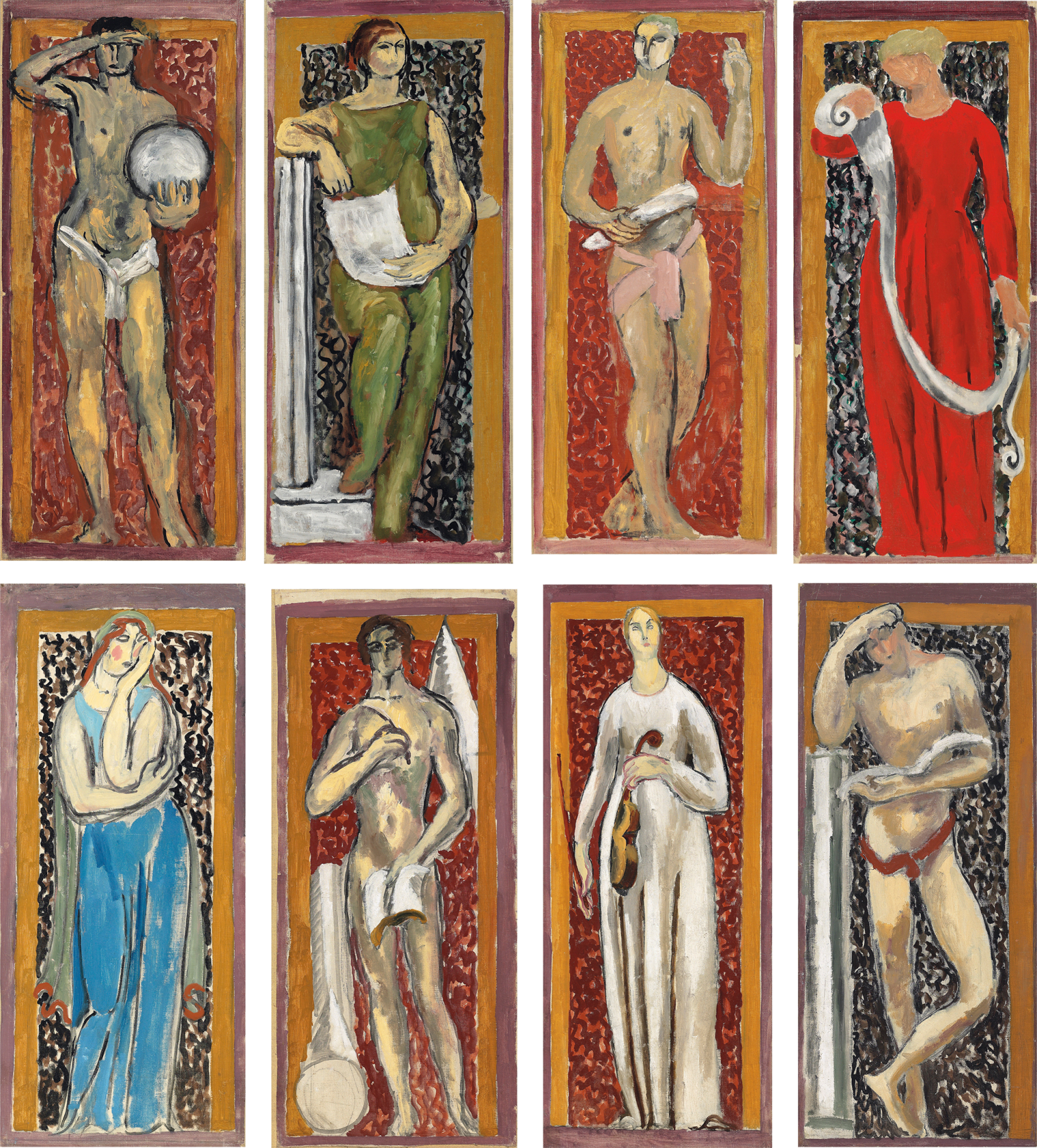Enquire
Duncan Grant and Vanessa Bell are vital figures in the narrative of early twentieth century British painting and design and, along with a number of other artists, intellectuals and writers, were the lifeblood of the Bloomsbury Group.
Another key member of this group was John Maynard Keynes, arguably the most seminal figure in 20th century economic philosophy. In 1920 Grant and Bell travelled to Italy with Keynes and on their return were asked to paint a series of panels for the interior of Keynes’s rooms at Webb’s Court at Kings College, Cambridge. The present works were painted in preparation for the larger panels, which are still in situ in Cambridge and represent an extraordinary fusion of the higher artistic and intellectual aspirations of the Group. Remarkably, despite one having been temporarily lost, these studies are now again together as a complete set.
The chosen theme was muses of the arts and sciences, and in the final works...
Another key member of this group was John Maynard Keynes, arguably the most seminal figure in 20th century economic philosophy. In 1920 Grant and Bell travelled to Italy with Keynes and on their return were asked to paint a series of panels for the interior of Keynes’s rooms at Webb’s Court at Kings College, Cambridge. The present works were painted in preparation for the larger panels, which are still in situ in Cambridge and represent an extraordinary fusion of the higher artistic and intellectual aspirations of the Group. Remarkably, despite one having been temporarily lost, these studies are now again together as a complete set.
The chosen theme was muses of the arts and sciences, and in the final works...
| Duncan Grant and Vanessa Bell are vital figures in the narrative of early twentieth century British painting and design and, along with a number of other artists, intellectuals and writers, were the lifeblood of the Bloomsbury Group. Another key member of this group was John Maynard Keynes, arguably the most seminal figure in 20th century economic philosophy. In 1920 Grant and Bell travelled to Italy with Keynes and on their return were asked to paint a series of panels for the interior of Keynes’s rooms at Webb’s Court at Kings College, Cambridge. The present works were painted in preparation for the larger panels, which are still in situ in Cambridge and represent an extraordinary fusion of the higher artistic and intellectual aspirations of the Group. Remarkably, despite one having been temporarily lost, these studies are now again together as a complete set. The chosen theme was muses of the arts and sciences, and in the final works the males were most likely painted by Grant and the females by Bell. Each of the subjects are portrayed with a symbolic attribute and are shown against a marble-like backdrop, in a manner not dissimilar to those no doubt seen on their travels in Italy. |










